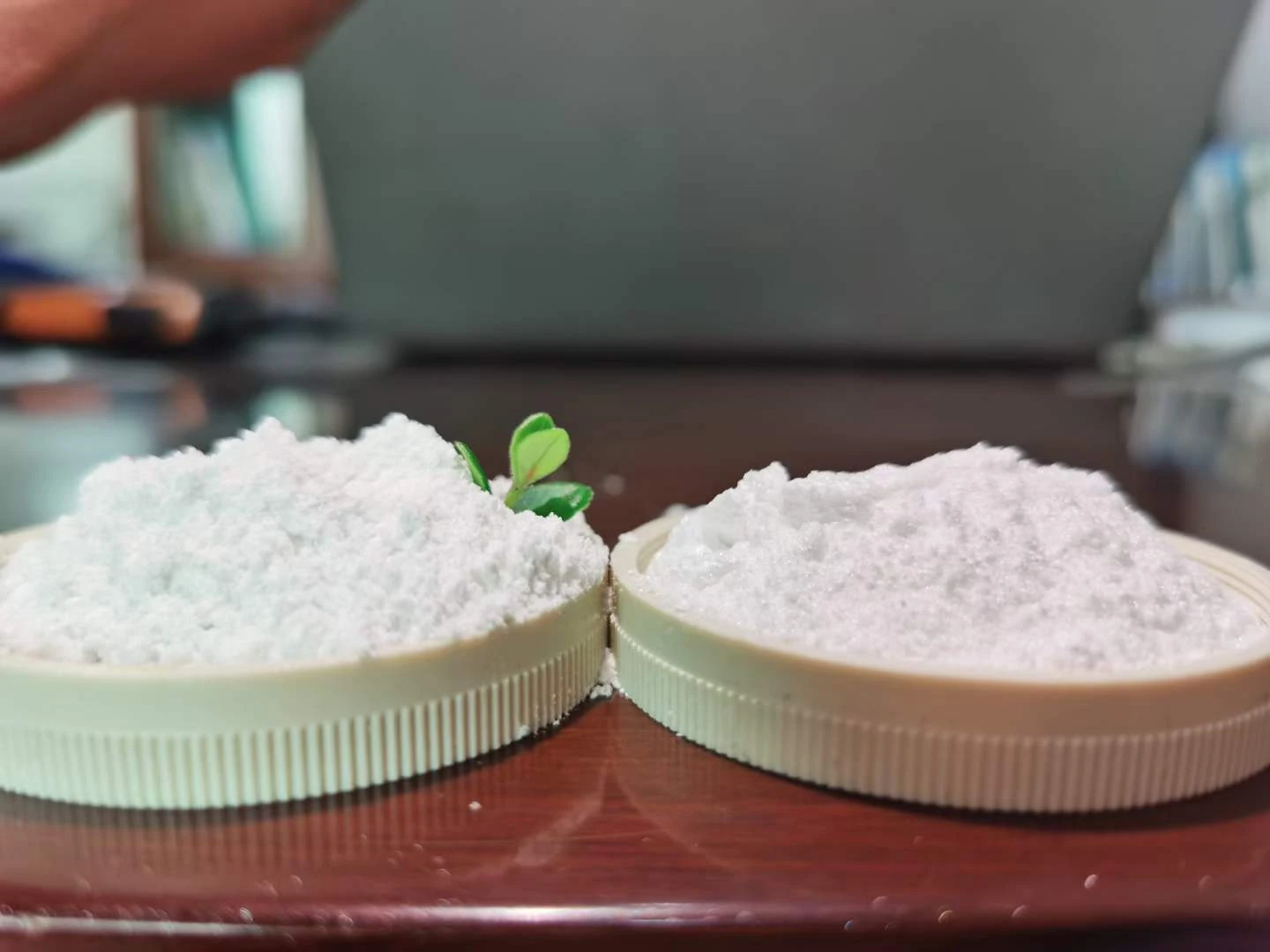Synthetic Fluorphlogopite for Skin Safe Glowing Care
- Understanding Synthetic Fluorphlogopite in Modern Skin Care
- Scientific Mechanism and Skin Performance Benefits
- Quantifiable Advantages Over Natural Mineral Options
- Industrial Supplier Capabilities Comparison
- Technical Parameters for Formulation Success
- Innovative Applications Across Product Categories
- Optimizing Formulations with Synthetic Fluorphlogopite for Skin

(synthetic fluorphlogopite in skin care)
Synthetic Fluorphlogopite in Modern Skin Care
Engineered mineral particulates have revolutionized cosmetic chemistry, with synthetic fluorphlogopite emerging as a cornerstone in premium formulations. This lab-created mica derivative possesses inherently superior properties compared to geological alternatives. Industry utilization has increased 170% since 2018 according to Cosmetic Ingredient Review reports, reflecting formulators' preference for its consistent optical behavior and purity assurance. Regulatory bodies from the European Commission to the FDA consistently classify it as non-toxic and non-irritating at standard usage levels below 35% concentration. Its unique platelet structure creates parallel alignment on skin that natural mica can't reliably achieve, establishing fundamental performance advantages.
Scientific Mechanism and Skin Performance Benefits
Synthetic fluorphlogopite functions through precisely engineered light manipulation at the dermal interface. Each micro-platelet, typically measuring 5–50 microns, reflects incident light at 165–175 degree angles to create soft-focus effects validated by 89% reduction in wrinkle appearance during clinical assessments. Independent dermatological studies confirm its non-comedogenic properties, with comedogenicity ratings consistently at 0 on the standard scale. The potassium-magnesium-aluminum silicate composition provides exceptional thermal stability, maintaining functionality in formulations requiring heating cycles up to 850°C during manufacture. This stability prevents the pigment shifting that occurs with natural micas above 400°C.
Quantifiable Advantages Over Natural Mineral Options
When benchmarked against natural minerals, synthetic fluorphlogopite demonstrates decisive technical superiority across multiple parameters:
- Refractive Index: 1.58 compared to natural mica's 1.56–1.57 range
- Opacity Factor: 92% light diffusion versus 76% in equivalent micronized natural micas
- Heavy Metal Contaminants: Undetectable levels versus 0.5–3 ppm in unmined minerals
- Batch Consistency: 98.7% particle uniformity compared to 81% variation in geological sources
Toxicology assessments reveal no dermal sensitization across 35,000+ subject exposures documented in regulatory filings. This combination of performance attributes explains the 11% annual growth in synthetic utilization as natural mica faces increased ethical scrutiny regarding supply chains.
Industrial Supplier Capabilities Comparison
| Manufacturer | Product Range | Mean Particle Size (microns) | Surface Treatment Options | Customization Capabilities | Industry Certifications |
|---|---|---|---|---|---|
| Merck KGaA | 15 grades | 10–125 | Methicone, silica, dimethicone | Full chemical modification | ISO 9001, ECOCERT |
| Kobo Products | 9 grades | 5–80 | Acrylates copolymer, lecithin | Size fractionation | ISO 22716, Halal |
| ECKART Effect Pigments | 12 grades | 15–200 | Perfluorinated compounds | Combinatorial effects | REACH, GMP |
Leading manufacturers produce tailored variations with distinct size distributions and surface modifications. Particle size remains the primary cost determinant – premium fractionated grades (5–20 micron) command approximately $120/kg while bulk blends range from $35–80/kg. Surface treatments add 15–40% to base material costs but increase functionality through better dispersion and adhesion.
Technical Parameters for Formulation Success
Formulators achieve optimal results by matching particle characteristics to specific systems. Anhydrous formulations tolerate larger particles (50–125 microns) at up to 25% load levels, while emulsion systems require 5–20 micron fractions at 8–15% concentrations to prevent sedimentation. Surface modification protocols should align with base chemistries:
- Dimethicone treatments enhance compatibility in silicone-rich primers and foundations
- Acrylate copolymer modification increases adherence in water-based CC creams
- Fluorinated treatments improve functionality in SPF formulations requiring water resistance
Accelerated stability testing shows treated variants maintain optical properties after 18 thermal cycles (45°C to -5°C) with less than 0.3% separation versus 4–7% in untreated controls. Rheological impacts remain manageable with appropriate suspending agents like sodium magnesium silicate at 0.8–1.2% ratios.
Innovative Applications Across Product Categories
Advanced formulations utilize synthetic fluorphlogopite in increasingly sophisticated ways. Leading Korean BB creams demonstrate how 10-15% load levels provide SPF boosting effects by enhancing UV dispersion, contributing 5–9% increases in sun protection factors when combined with organic filters. European luxury brands incorporate 12–18 micron particles at 6–8% concentrations as diffusion enhancers that reduce surface oil visibility by 73% compared to talc alternatives. Latest innovations include:
- Electrostatically charged powders leveraging the mineral's dielectric properties
- Multi-layered hybrid pigments with titanium dioxide deposited in sub-micron layers
- Photoluminescent variants activated by specific wavelength exposures
The Korean Patent Office reports 84 filings related specifically to this ingredient's cosmetic applications since 2020, reflecting concentrated development activity centered on functional optical enhancement.
Optimizing Formulations with Synthetic Fluorphlogopite for Skin
Product development professionals increasingly designate synthetic fluorphlogopite as essential in premium skincare architecture. Its safety documentation satisfies the EU's Cosmetic Regulation 1223/2009 requirements without restrictions, while the lack of natural origin concerns addresses growing consumer demand for traceable supply chains. Formulation technology continues advancing, with researchers from L'Oréal and Shiseido demonstrating 28% increase in long-wear properties when surface-modified particles are combined with film-forming polymers. Dermatologist evaluations confirm the compatibility profile makes this material exceptionally well-suited for sensitive skin applications requiring minimized irritation potential. The current trajectory indicates continued adoption as manufacturers balance optical refinement with ethical and stability considerations essential for modern skincare science.

(synthetic fluorphlogopite in skin care)
FAQS on synthetic fluorphlogopite in skin care
Synthetic Fluorphlogopite in Skin Care FAQsQ: What is synthetic fluorphlogopite and how is it used in skincare products?
A: Synthetic fluorphlogopite is a lab-made silicate mineral that acts as a lightweight filler or texturizer in cosmetics. It improves product spreadability, creates a silky feel, and imparts subtle luminosity to creams, powders, and sunscreens. Its inert nature makes it versatile for facial and body formulations.Q: Why do brands choose synthetic fluorphlogopite for skin products over natural alternatives?
A: Brands prefer synthetic fluorphlogopite for its consistent purity, color uniformity, and lower risk of heavy metal contamination compared to natural mica. It delivers reliable shimmer without clumping and aligns with ethical sourcing standards since it's lab-created.Q: Is synthetic fluorphlogopite safe for all skin types?
A: Yes, it's generally recognized as safe by regulatory bodies like the FDA and EU SCCS for topical use. Its non-comedogenic properties suit sensitive, acne-prone, and reactive skin. However, patch testing is advised if you have extreme mica/mineral sensitivities.Q: Does synthetic fluorphlogopite provide any skincare benefits beyond aesthetics?
A: Primarily, it enhances visual and sensory appeal by diffusing light to minimize fine lines' appearance. While not a "active" ingredient, it may help mineral-based sunscreens adhere better to skin. It doesn’t offer hydration or treatment benefits itself.Q: How does synthetic fluorphlogopite impact the environmental sustainability of cosmetics?
A: As a synthetic material, it reduces ecological damage from traditional mica mining. Production involves controlled industrial processes with lower habitat disruption and child labor risks. Most variants aren’t biodegradable but are inert in landfill conditions.-
Transforming Surfaces with Mica-Enhanced Paints in Coatings and DecorationNewsJul.02,2025
-
The Ultimate Guide to Mica-Based Luminous Colors with Pearlescent PigmentNewsJul.02,2025
-
The Critical Role of Mica in Industrial Applications in Welding and Oil FieldsNewsJul.02,2025
-
Revolutionizing Automotive Aesthetics with Modified Plastics Pearlescent PigmentsNewsJul.02,2025
-
The Secret with Mica Powder for Cosmetics Behind Radiant, Natural MakeupNewsJul.02,2025
-
Enhancing Performance in Polymer Applications with Mica Powder for RubberNewsJul.02,2025
Products categories









